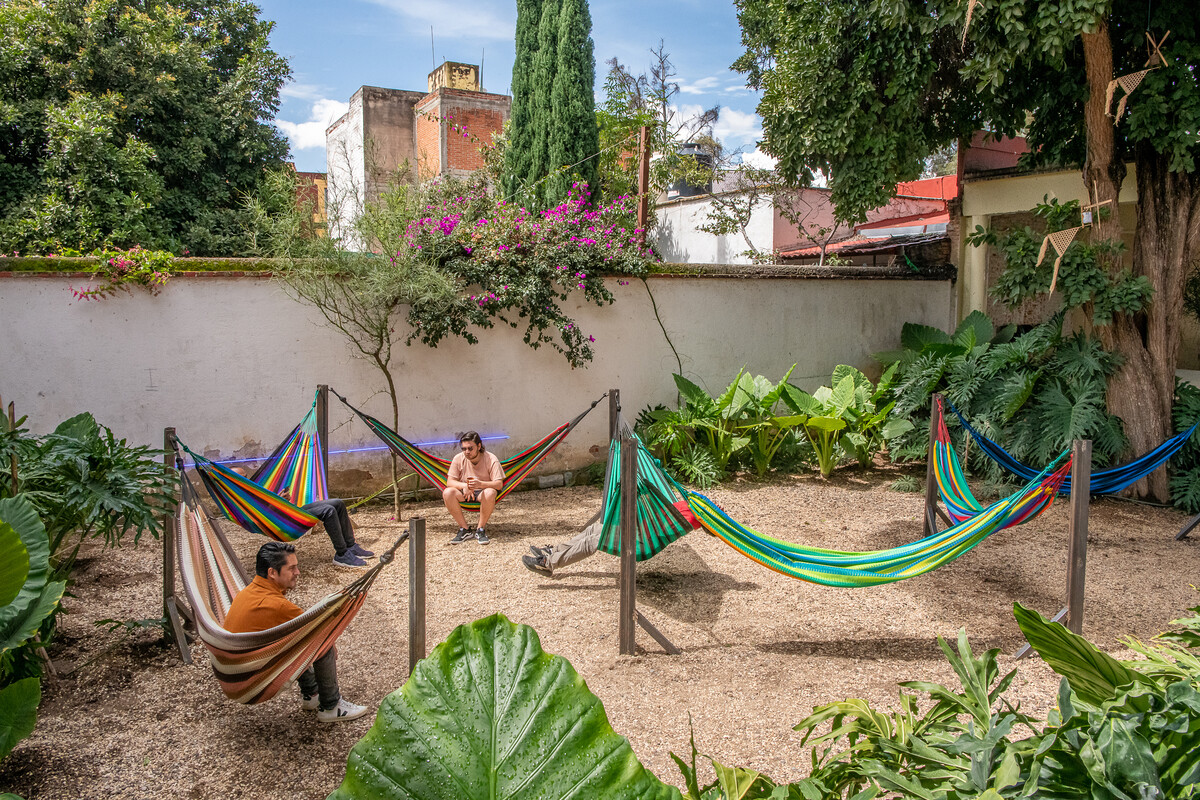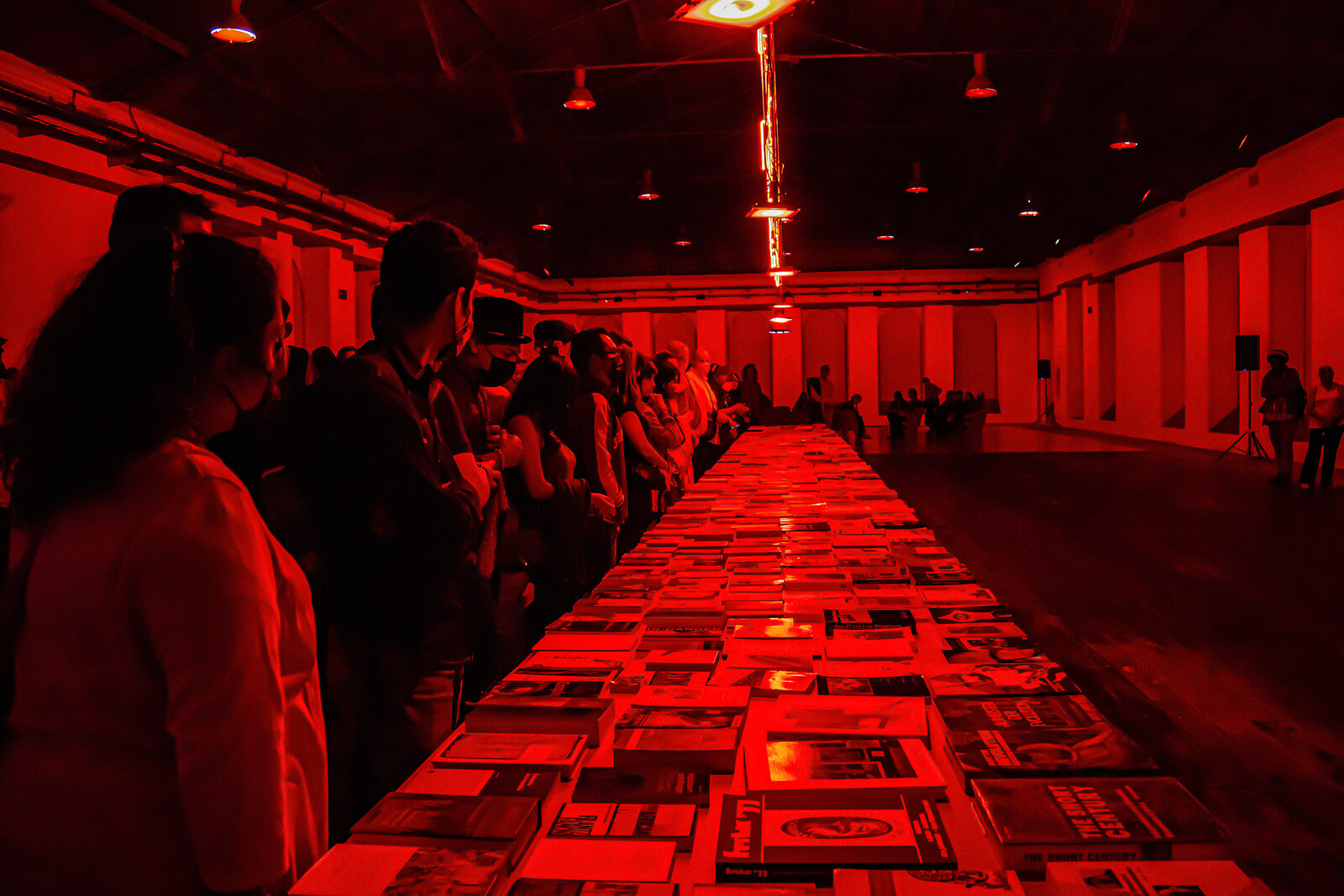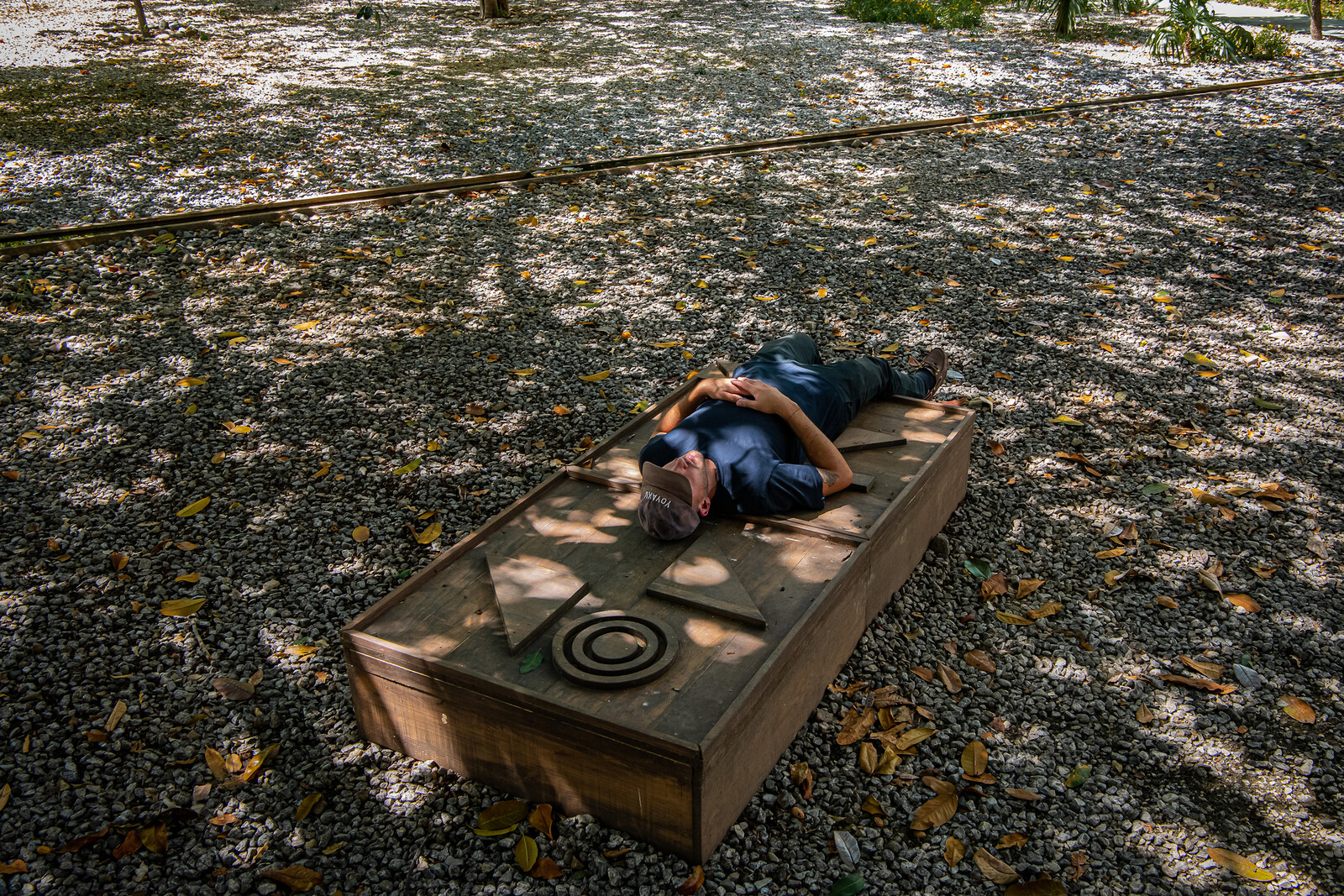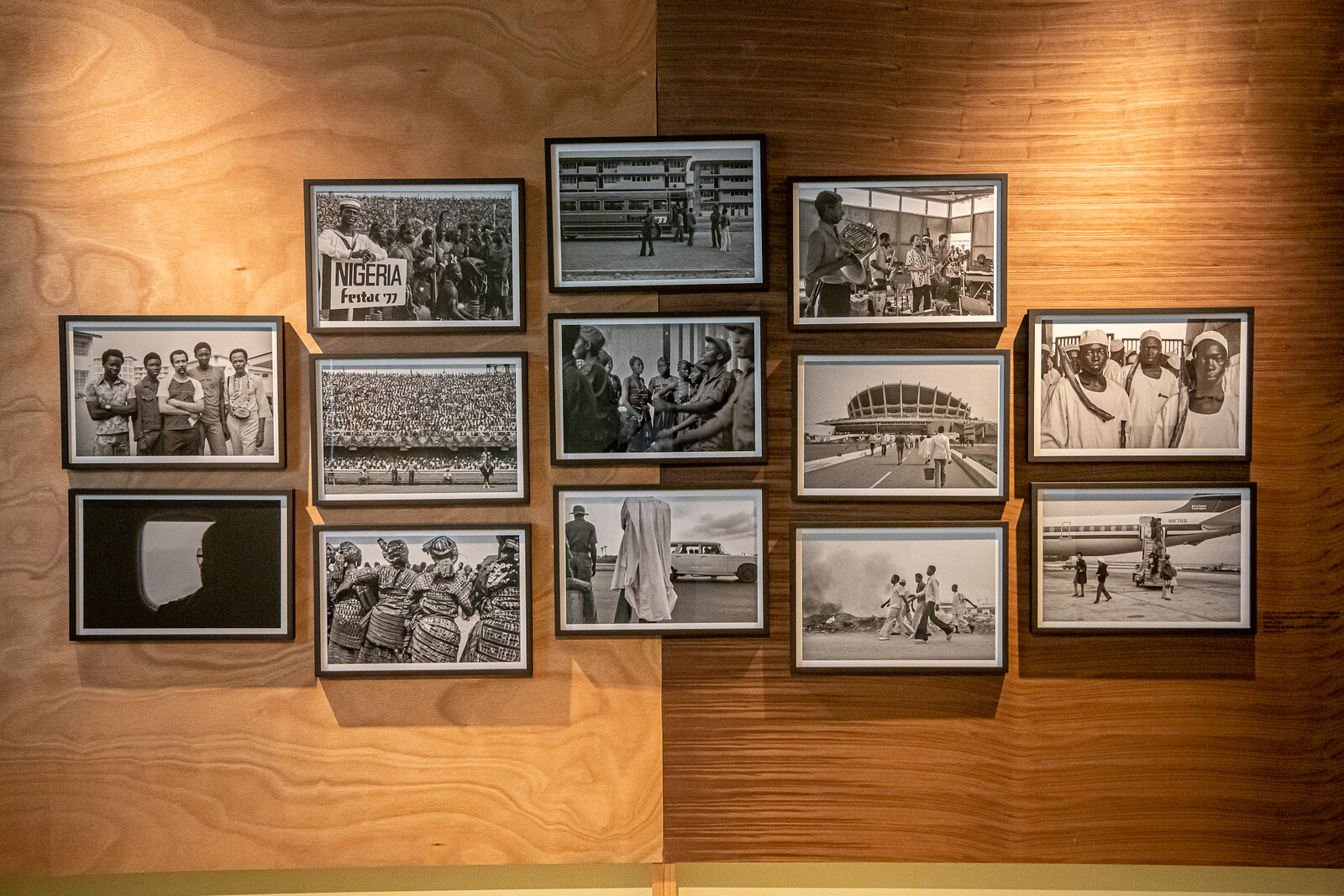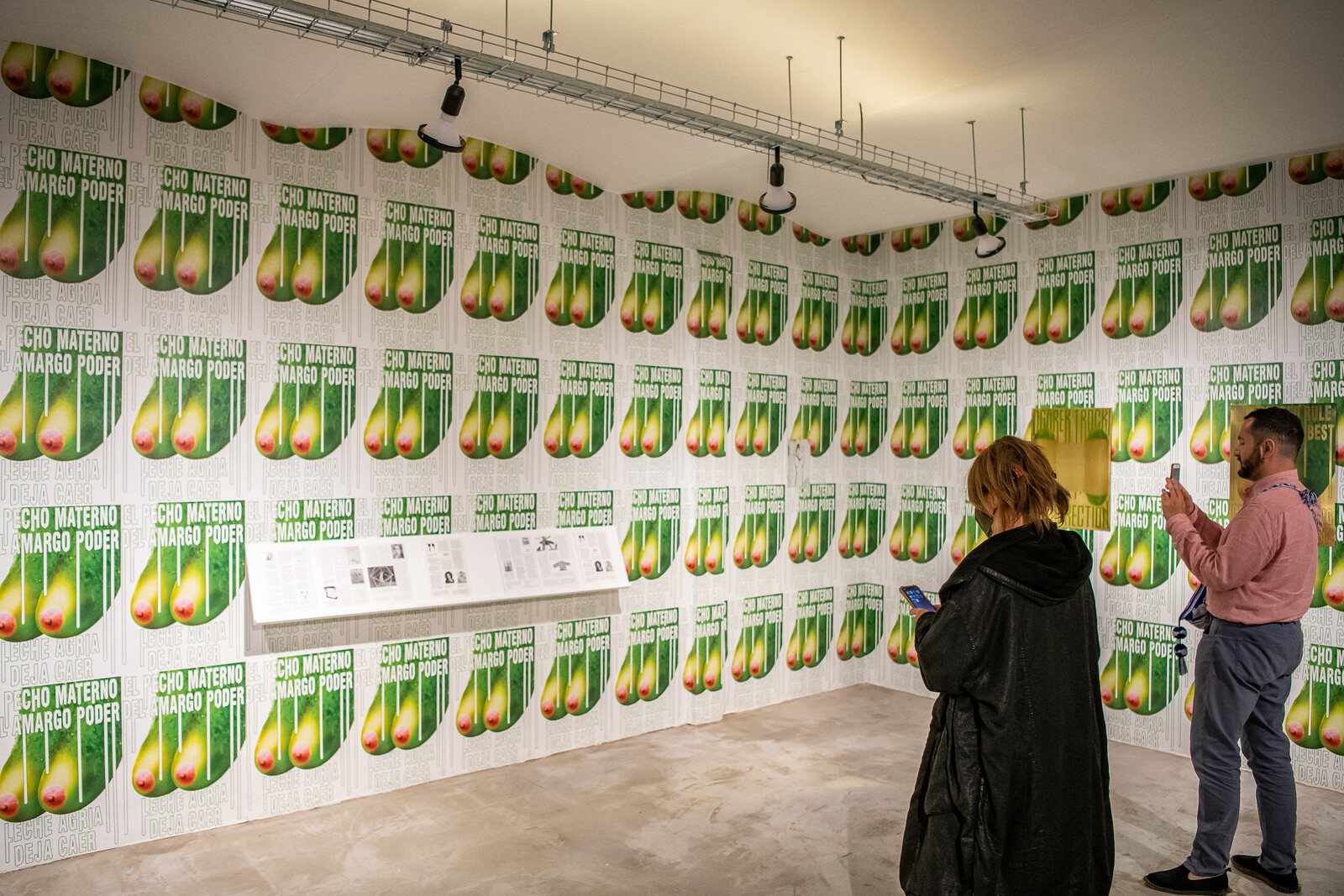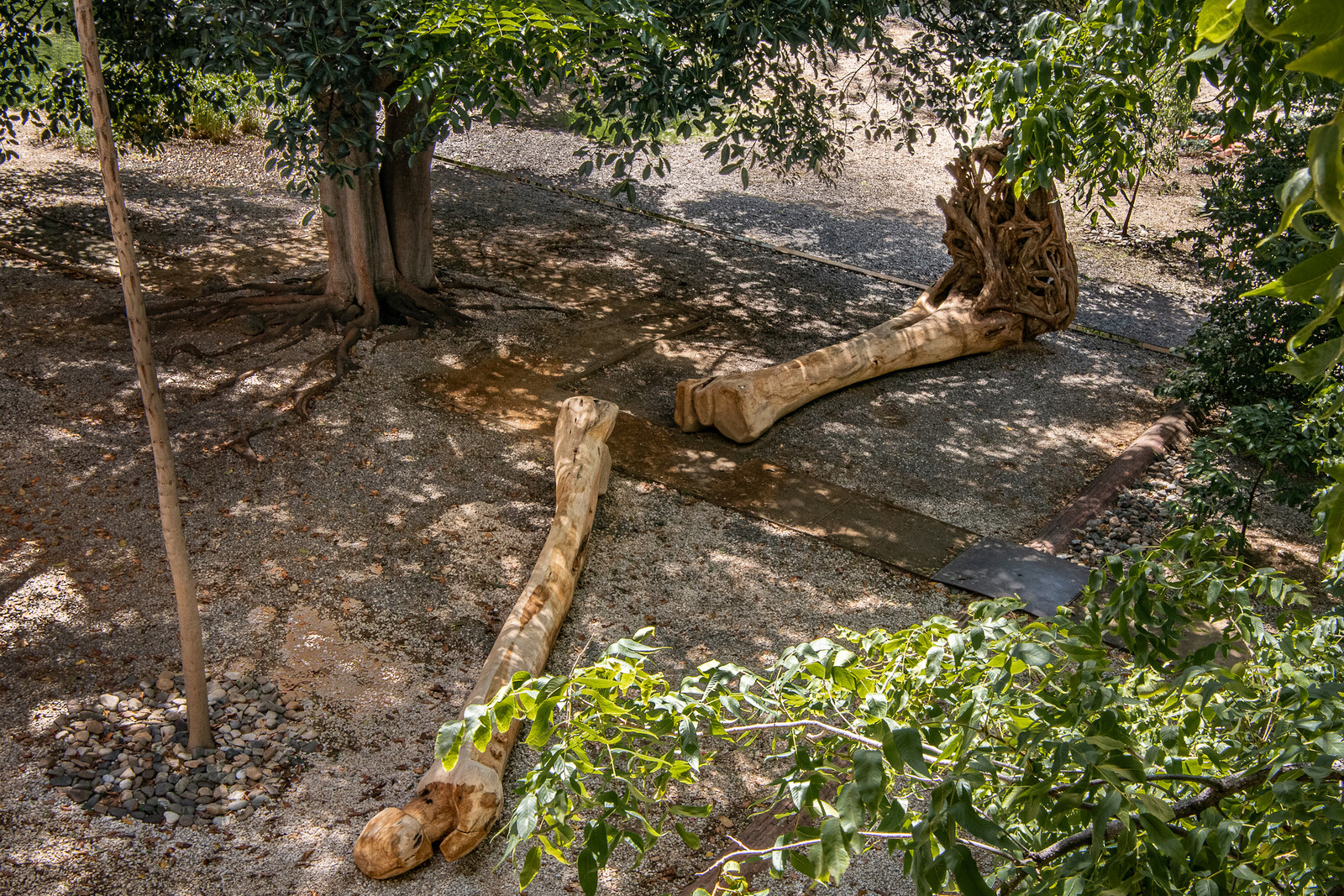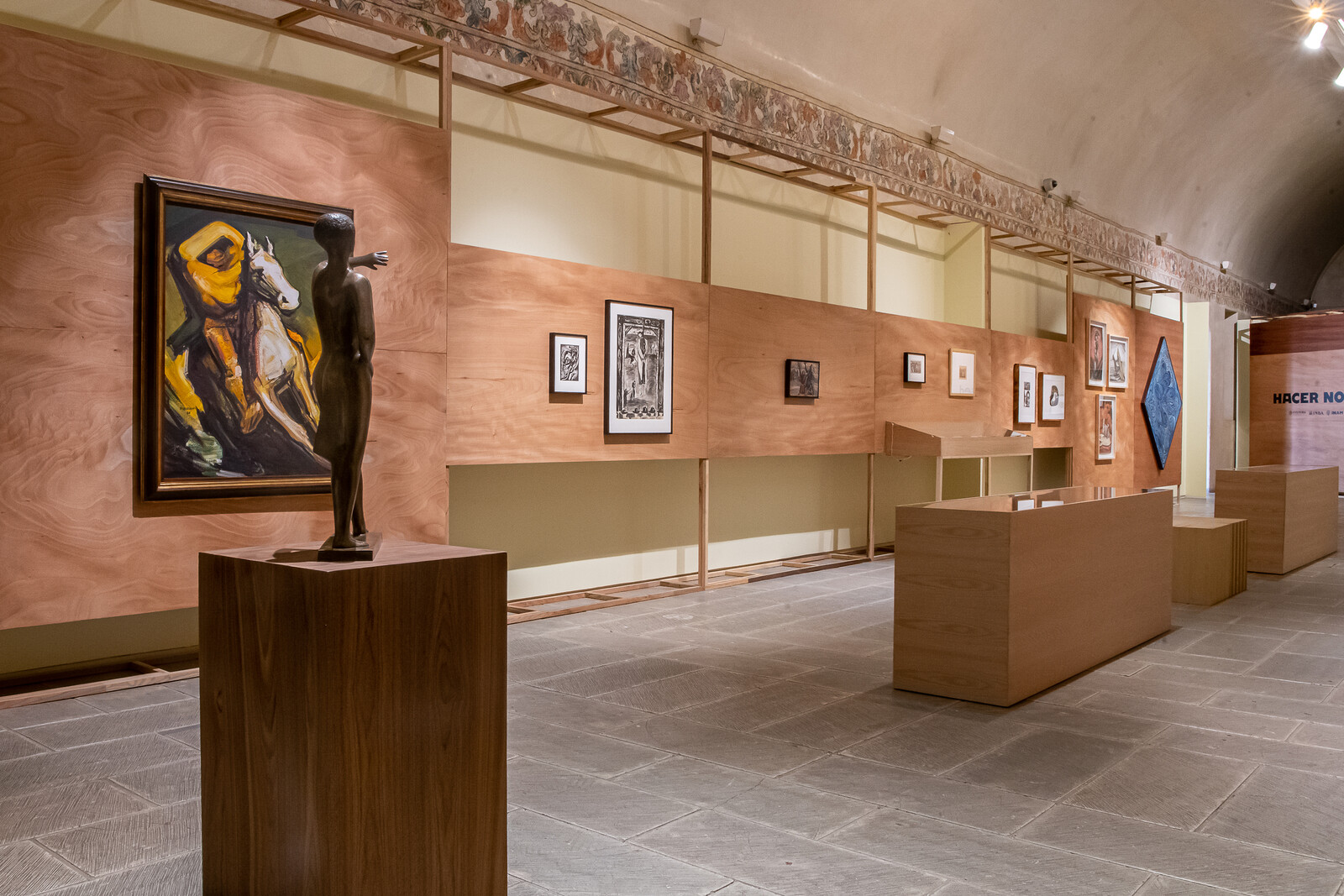September 3–December 4, 2022
Hacer Noche—an independent biennial directed by a former employee of the Mexican Ministry of Foreign Affairs, Francisco Berzunza—aims to establish connections between Oaxaca and international contemporary art discourse. The first edition, in 2018, set a high bar. The second, titled “Promised Land” and curated across ten venues by Elvira Dyangani Ose, strives to set the history of global leftist activism in dialog with Mexican art history. Yet sparse curatorial framing, alongside a casual commitment to presenting works with basic information for the visitor, leave the overall throughline too vague to be persuasive.
The main exhibition, at Museo de Las Culturas de Oaxaca in the Santo Domingo convent, features two salons of works by eighteen artists on plywood displays. Among these are several coups in the form of institutional loans, including paintings by Mexican artists Rufino Tamayo and David Alfaro Siqueiros classified as “artistic national monuments” whose loans require federal approval by the museum’s sister institution, the National Institute of Fine Art (INBA), and from UAE-based Barjeel Art Foundation, including a painting by Dia Al-Azzawi, a pioneer of modern Arab art. Significant care has gone into establishing a dialogue between celebrated and underknown artists. Curiously, however, little contextual information is provided to illuminate the curatorial thought behind the show, and many works are presented without even a wall text to identify the artist. Perhaps the organizers want to avoid appearing paternalistic. But there’s a difference between facilitating access and being overbearing.
Santo Domingo is the primary cultural institution for one of the poorest states in Mexico. Hacer Noche’s audiences therefore range from rural residents whose mother tongue is one of sixteen regional indigenous languages to national and international tourists with every possible level of access to resources and education. It feels oddly exclusionary, therefore, to hide the scholarship behind the pairing of Tamayo and Siqueiros, whose paintings depicted the proletariat as the backbone of Mexican identity, with works by artists addressing international themes, such as the Mexican-American artist Elizabeth Catlett’s lino-cut Malcolm X Speaks for Us (1969). Elsewhere, pieces by Sudanese painter Ibrahim El-Salahi and Egyptian artist and feminist activist Inji Efflatoun flank a central vitrine of small drawings and puppets by Mexican artists Lola Cueto and Lola Álvarez Bravo. Ephemera from and clippings about Siqueiros’s visit to Egypt in 1956 from a Cairo newspaper suggest that the exhibition is proposing links between Black American, Arab, African, and Mexican art and activism—but with no translations from the Arabic, it’s difficult to know what.
“Promised Land” takes place in a troubling time for Mexico’s cultural sector. The cultural policies of Andrés Manuel López Obrador’s administration have left the country’s underfunded state-dependent museums in disastrous administrative conditions. This has led to the closure, among other institutions, of Oaxaca’s Museum of Contemporary Art. The gaps in funding are plugged with reduced hours, crowdsourced funding, and independent privately funded initiatives such as Hacer Noche. As such, the most revealing aspect of the show may be the questions it raises, however inadvertently, around where power and public responsibility in the arts in Mexico truly lies: with curators, cultural technocrats, or organizational leadership.
At CaSa Oaxaca, in a village outside the city, Alfredo Jaar installed a table with books in English and Spanish about Marxism and radical left histories under a red neon sign that asks “¿Que Hacer?”, a reference to Lenin’s “What is to be done?” Oaxaca has a well-organized political left and active anarchist party. But the impracticality of a reading room as artistic gesture is emphasized by the dark lighting and uncomfortable platform seating, which together suggest that the installation is more a formal than functional intervention—an impression underscored by the sizable community of Oaxacans for whom Spanish is not the first language.1 Without curatorial grounding, there’s a danger of using progressive politics to signal one agenda while functionally serving another. It calls to mind how the Institutional Revolutionary Party instrumentalized the muralists to articulate a vision of the modern Mexican state that portrayed Indigeneity as central to the national identity narrative, while depriving Indigenous communities of access to basic services and rights.
In roughly this vein, the presentation of Slavs and Tatars at the concept store Son de Aquí [They are from Here] felt more invested in attracting influencer attention than conveying specific ideas. Most of the show is dedicated to the collective’s signature graphic works that riff on linguistic slippages between Cyrillic, Arabic, and Latin alphabet cultures. The only local reference was on the upstairs bar, which was wallpapered with posters of pickles photoshopped with nipples over which drip the phrase: “El pecho materno del amargo poder leche agria deja caer” [The maternal breast of embittered power gives sour milk]. Again: no explanations. Just droopy pickle tits, sour power, and mezcal cocktails. Hacer Noche co-organizer Elise Durbecq explained that the downstairs space is “like a museum shop” offering limited editions while the bar hosts performances curated by Hacer Noche. About Slavs and Tatars’ work, she offered, “it’s very complex.”
There’s a case to be made that their work engages with Oaxaca’s graphic art and community organizing history. This begs the question of how the work might have read differently at the Francisco Toledo-founded Instituto de Artes Gráficas de Oaxaca, where their playful approach to linguistic transmogrification would have been in dialogue with the art library that was Oaxaca’s first public cultural institution to print graphic art and books in regional indigenous languages. Sure, both are free to enter, but social barriers are real. It’s a different gesture to place editioned work in a store selling local goods at prices which are aspirational even by New York standards. In a place with such stark income disparity, in which Airbnb and the government are collaborating to attract digital nomads which displace locals, what responsibility does a remotely based team engaging with regional histories have to the communities bearing the effects of the gentrification that the festival and Mexican artisan-chic fashion trends are fueling?2
On the edge of the historic center, the Oaxacan emerging artist collective Yope Projects presents an installation of ceramic works “discovered” during a performance near the Monte Albán archeological site. The project inverts the tropes by which tourism-dependent economies such as Oaxaca and Mexico peddle themselves to foreigners: artisanal craft, contemporary art, and archeology. Displayed on metal shelving in a former commercial space, barro rojo aliens, a Pikachu, and a riff on Gabriel Orozco’s My Hands are My Heart (1991) needle at the flattening of Oaxacan identity into a noble ethnographic narrative for foreign consumption. This exhibition succeeds where Hacer Noche at large stumbles by being clear about its position and its politics.
The Hacer Noche team is comprised of well-connected chilangos mostly based in Mexico City. Being from the capital doesn’t necessarily mean a lack of sincere commitment to Oaxaca and not having advanced degrees in art does not necessarily equate to dilettantism. Pressing the organizers for Dyangani Ose’s text was met with a response that it “has spelling errors” implying it is not available, emphasizing her conspicuous absence. At site after site the lack of information or context for the work was consistent enough as to prompt questioning as to whether it signaled an indifference to audiences, lack of preparation, or agendas at odds. It is an unfortunate irony to invoke manifest destiny with the title “Promised Land” in the state of the nunca vencidos but presenting work by international artists without clear positioning and inclusive exhibition strategies risks instrumentalizing imaginaries of local audiences rather than respond to shared realities. It begs the question, is art that is inaccessible to many of Oaxaca’s publics truly public art?
*This review was amended on November 18 to clarify that the Museo de Las Culturas de Oaxaca is a sister institution to the National Institute of Fine Art
The organizers have asked that it be stated that they consulted with local indigenous groups prior to the show’s installation
Fernando Miranda, “‘Turismo en el Centro Histórico de Oaxaca debe ser de calidad, no de cantidad’: Nelly Robles, experta del INAH,” El Universal Oaxaca (December 2020), https://oaxaca.eluniversal.com.mx/metropoli/28-12-2020/turismo-en-el-centro-historico-de-oaxaca-debe-ser-de-calidad-no-de-cantidad; “Mexico City govt joins Airbnb to lure ‘digital nomads’, despite rising rent fears, ” Reuters (October 2022), https://www.reuters.com/world/americas/mexico-city-govt-joins-airbnb-lure-digital-nomads-despite-rising-rent-fears-2022-10-27/.
